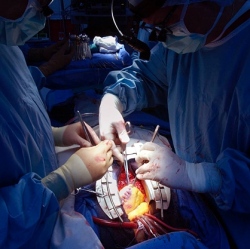
Rice University bioengineers have developed a hydrogel scaffold for regeneratomg craniofacial bone tissue. The hydrogel starts as a liquid, solidifies into a gel in the body, and liquefies again for removal.
The material developed in the Rice lab of bioengineer Antonios Mikos is a soluble liquid at room temperature that can be injected where needed. At body temperature, the material turns instantly into a gel to help direct the formation of new bone to replace that damaged by injury or disease. It also serves as an effective delivery vehicle for growth factors and stem cell populations.
The gel conforms to irregular 3D spaces and provides a platform for functional and aesthetic tissue regeneration. It is intended as an alternative to prefabricated implantable scaffolds.
“This new platform technology leverages injectable, thermally responsive, chemically crosslinkable and bioresorbable hydrogels for regenerative medicine applications,” Mikos said. “It enables the formation of scaffolds locally and the delivery of growth factors and stem cells into defects of complex anatomical shapes with minimal surgical intervention.”
Once sufficient quality and quantity of bone tissue have regenerated to fill the defected site, the hydrogel scaffold can be transitioned back into a liquid state and released naturally.
As part of the project, the researchers will test the hydrogel’s enhanced seeding capabilities and ability to promote cellular attachment, crosstalk and proliferation toward greater bone formation. The knowledge will improve the understanding of biomaterial-based therapies for minimally invasive tissue regeneration as viable clinical alternatives.
